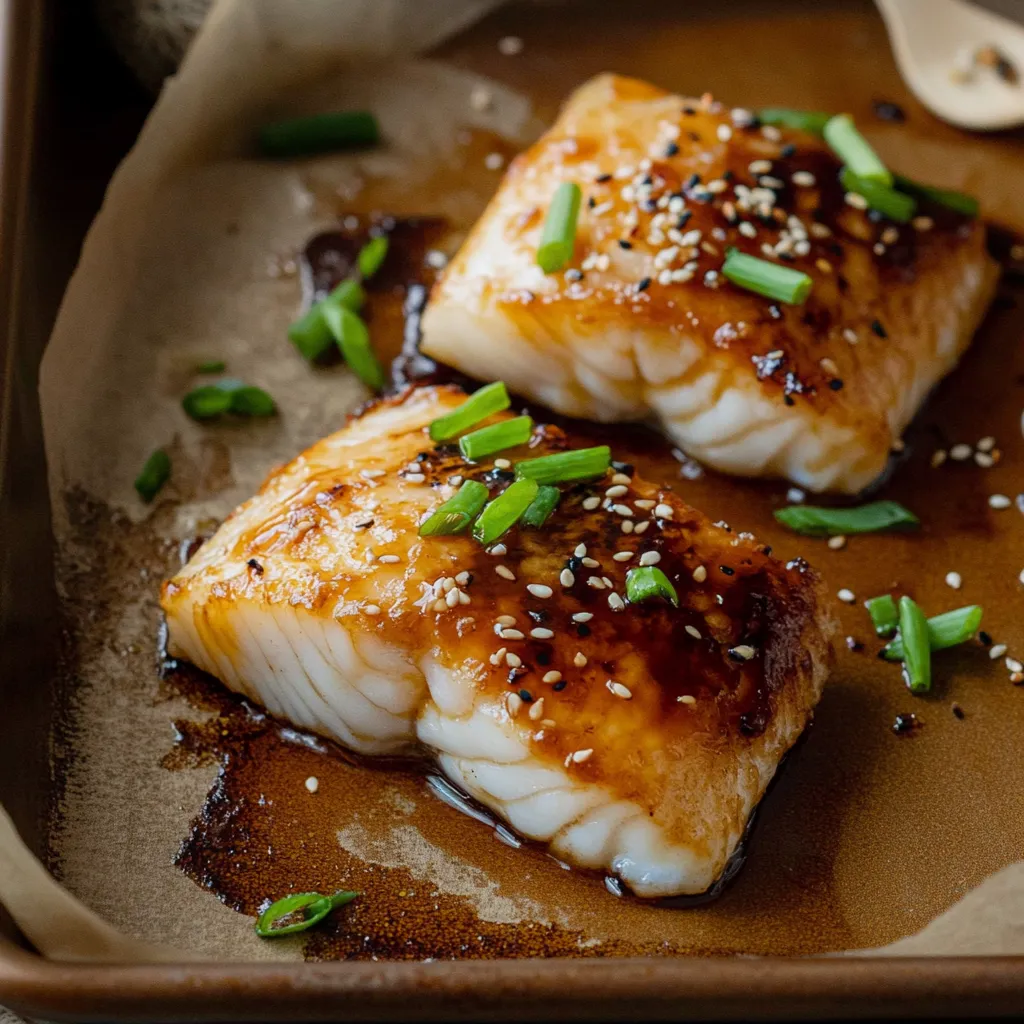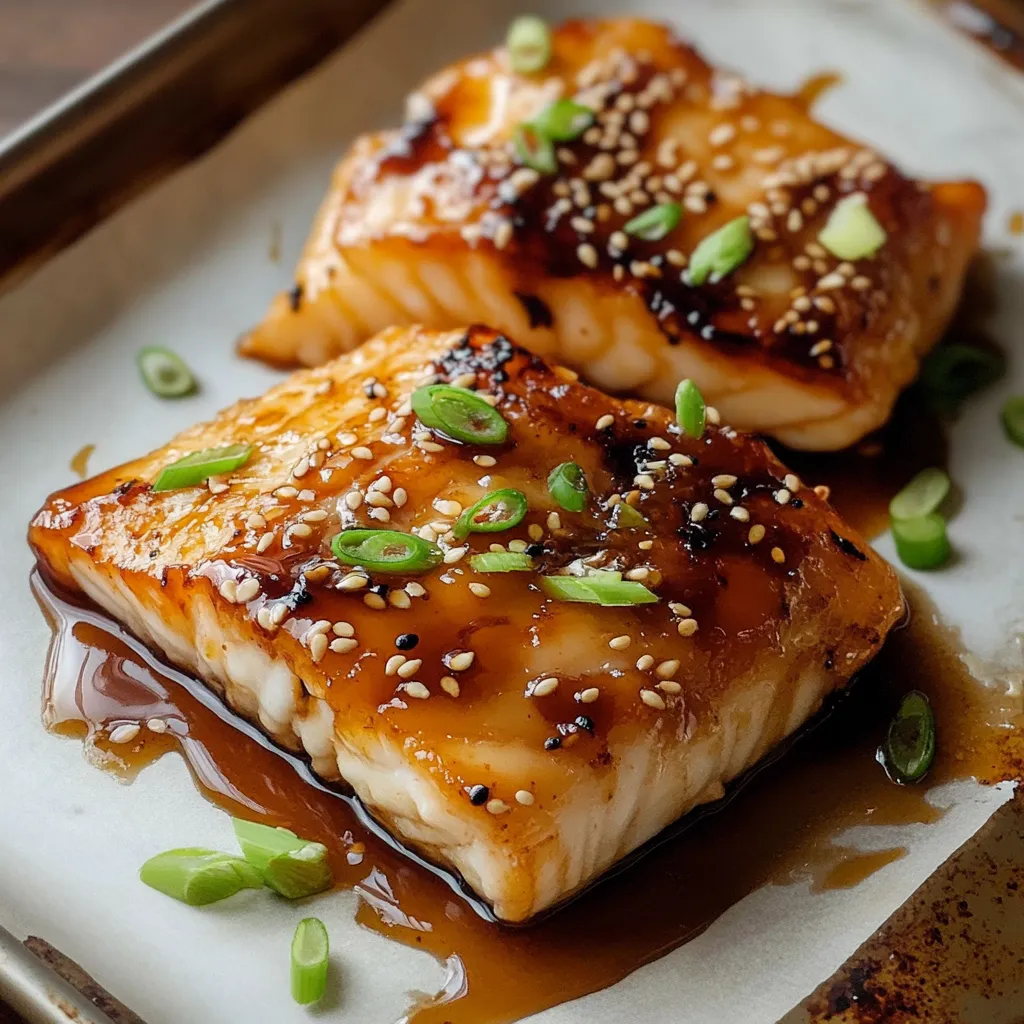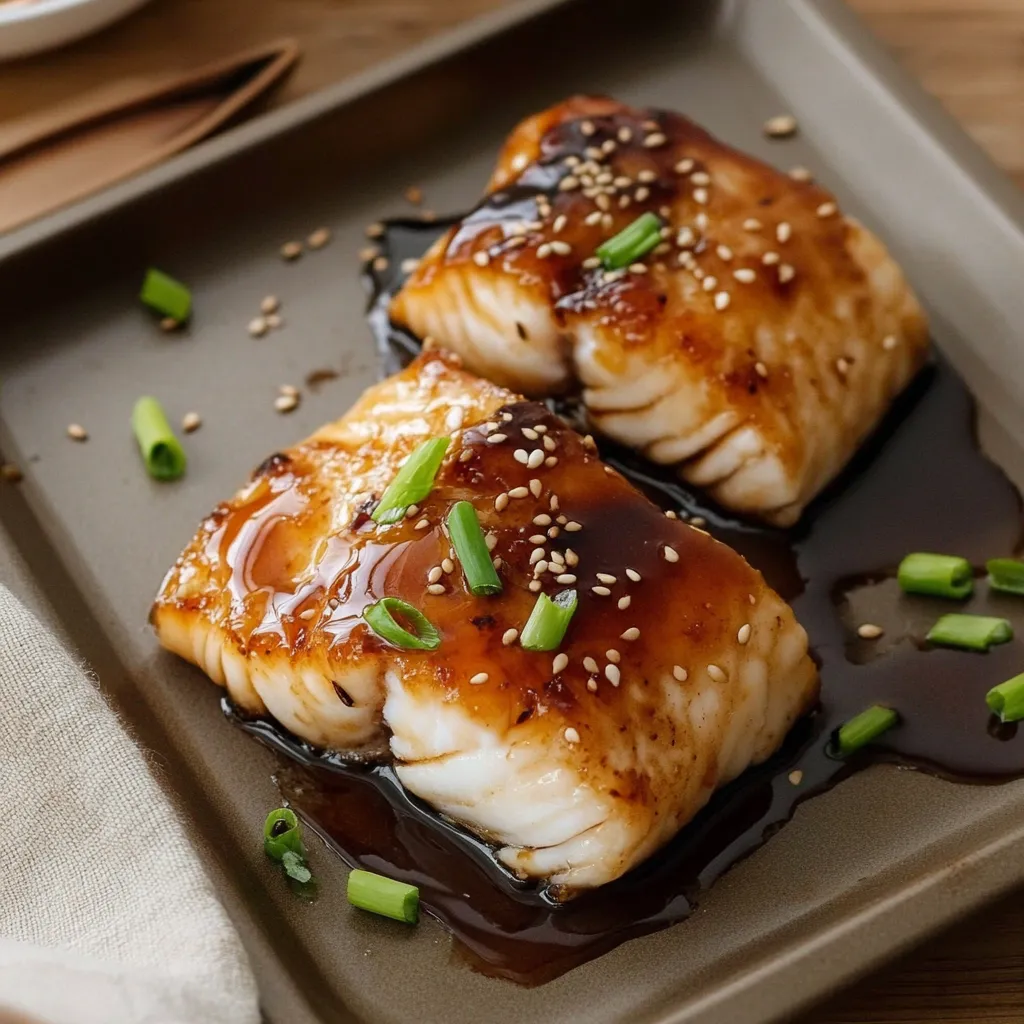 Pin it
Pin it
Sweet honey pairs with savory soy sauce to make plain cod into something special. This fusion dish balances sugary honey, umami-rich soy sauce, and zingy ginger, giving you a tasty glaze outside while keeping the fish juicy inside. You don't need fancy cooking skills or weird ingredients to make this weeknight meal feel like restaurant food.
I made this glazed fish for my family get-together recently, and my picky nephew actually wanted more. The taste was familiar enough for everyone but still felt fancy enough for our celebration dinner.
Key Ingredients and Shopping Tips
- Cod Fillets: Go for chunky, solid pieces that look clear, not cloudy, and don't smell fishy. They should bounce back when you poke them. Wild Pacific cod tastes best, but good farmed options work fine too
- Honey: Pick real, unprocessed honey for better flavor. Local honey can add nice flowery hints that make the dish even tastier
- Soy Sauce: Good quality Japanese or Korean brands give you richer flavor than regular supermarket stuff. Stick with light soy sauce so it doesn't take over the fish taste
- Fresh Ginger: Look for smooth, hard pieces without wrinkles. Young ginger gives you a gentler, more fragrant kick that works perfectly here
- Sesame Oil: Get the toasted kind for authentic taste. It should be dark amber and smell really strong
- Rice Vinegar: Buy plain, unseasoned vinegar so you can tweak the flavors yourself
Step-by-Step Cooking Guide
- First: Mix Your Glaze
- Get everything lined up and mix your soy sauce, honey, and sesame oil in a small bowl. It should be thick enough to stick to a spoon when you dip it. Grate your ginger right into the mix to catch all those flavorful oils. Stir until everything's completely blended and the honey isn't sitting at the bottom.
- Second: Get Your Fish Ready
- Use paper towels to completely dry your cod. Check for any tiny bones and pull them out with tweezers if you find any. Let the fish sit out for 15 minutes while you work on the other stuff.
- Third: Coat and Rest Your Fish
- Paint each piece of fish with plenty of glaze. Make sure you cover all sides. Put them in a glass dish with some space between each piece. Cover and stick in the fridge for at least 30 minutes but not longer than 2 hours - this lets the flavors sink in without making the fish mushy.
- Fourth: Set Up Your Oven
- Move your oven rack so it's about 6 inches from the broiler. This gives you perfect browning. Put parchment on a baking sheet and brush it with a little oil so the fish won't stick. Put the thicker parts of the fillets toward the outside of the pan where it's hotter.
- Fifth: Cook With Regular Glazing
- Start broiling on low, and brush more glaze on every few minutes. This builds up layers of flavor and makes it look shiny. Watch for tiny bubbles around the edges of the fish - that shows it's cooking at the right temperature.
 Pin it
Pin it
Smart Timing and Heat Management
Knowing your own oven matters a lot for this dish. All ovens heat differently, so watch how the fish looks while cooking. It should gently bubble but not smoke, and the glaze should slowly turn brown. The inside should reach 135°F for perfect doneness, giving you moist fish that flakes easily.
What To Look For While Cooking
As your cod cooks, you'll see the fish turning white from the bottom up. The top will turn a beautiful golden-brown as the honey caramelizes. When you notice little bubbles forming in the flesh, that's the fish's natural oils coming out - a good sign that means it's cooking just right.
Prep Ahead and Leftovers
You can mix up the glaze three days early and keep it in a sealed container in your fridge. Just warm it up a bit before using if it gets too thick. Any leftover fish will stay good for a couple days if you keep it covered in the refrigerator.
Changing It Up With The Seasons
In summer, try adding fresh Thai basil or cilantro to your glaze. Winter dishes taste great with a bit of star anise or cinnamon mixed in. Spring calls for some fresh lemon or lime zest, while fall dishes work nicely if you swap the honey for maple syrup.
Fixing Common Problems
If your glaze starts getting too dark, just cover the fish loosely with foil to stop it from burning. For extra-thick pieces, cook them longer but turn the heat down. If your fish is letting out too much water, try drying it more thoroughly before adding the glaze.
My folks really love the ginger in this dish. I started growing ginger at home a few weeks back, and wow - using freshly dug ginger makes such a difference. That warm, spicy kick it adds to the glaze has become what everyone expects when I make this at our house.
This has become my favorite way to cook cod, turning an ordinary fish into something worth talking about. Layering on the glaze multiple times builds amazing flavor while keeping the cod's natural sweetness. Whether it's just a regular Tuesday dinner or you've got company coming, this simple method always turns out great without tons of fuss.
 Pin it
Pin it
Frequently Asked Questions
- → Can I swap this fish for another?
- Absolutely, try it with white fish like halibut, sea bass, haddock, rockfish, lingcod, or black cod.
- → How do I tell if it's cooked?
- The fish is done when it flakes easily with a fork and hits 135-140°F inside.
- → Can I prep the glaze in advance?
- Sure, you can make the glaze up to two days ahead and pop it in the fridge.
- → What if I don’t have honey?
- You can swap honey for maple syrup or brown sugar for a similar sweet touch.
- → What sides go well with this?
- Pair it with stir-fried veggies, steamed rice, or a light Asian slaw.
